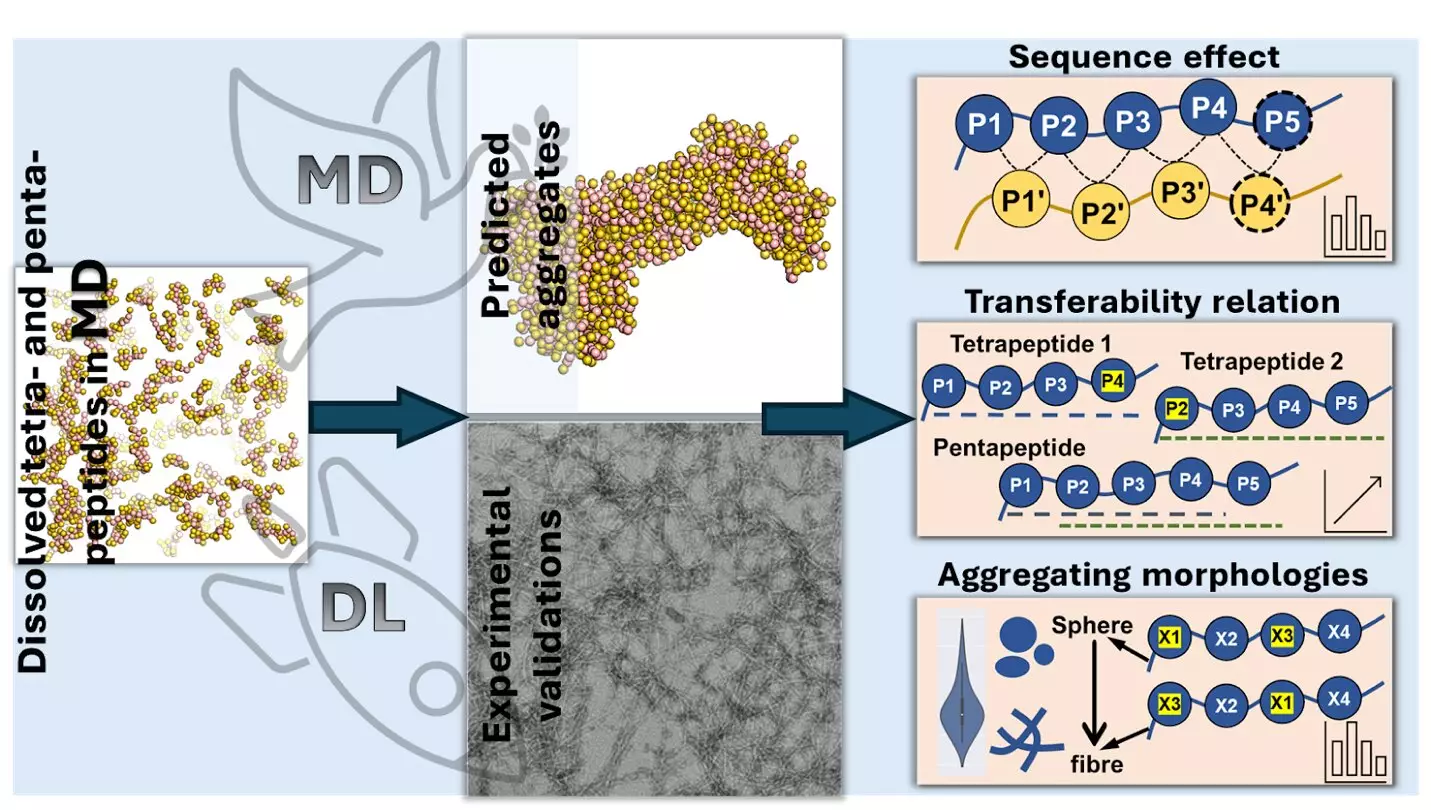Peptides are short chains of amino acids that play crucial roles in the human body. They are involved in building structures, accelerating chemical reactions, and supporting the immune system. The specific function of a protein is determined by how its amino acids interact and aggregate into a three-dimensional structure. This interaction and folding process is essential for the protein to carry out its intended function.
Scientists from China conducted a study to investigate how short peptide chains aggregate and interact. Using molecular dynamics simulations and advanced AI techniques like Transformer Regression Networks, the research team analyzed tetrapeptides and pentapeptides to predict their aggregation behavior based on the amino acid sequence. The study focused on how certain amino acids, particularly aromatic ones like tryptophan, phenylalanine, and tyrosine, impact peptide aggregation. The researchers also discovered that the positioning and type of amino acids influence the shape of peptide clusters.
The findings of the study hold significant implications for medicine, material science, and biotechnology. Understanding how peptides aggregate can aid in the development of more stable drugs and drug delivery systems. By predicting how peptides will clump together based on their amino acid composition, researchers can design materials with specific properties. This knowledge is also valuable in the field of biotechnology, where accurate and consistent tools like semiconductors, biosensors, and diagnostics are essential.
Peptide aggregation is associated with various diseases, such as Alzheimer’s disease, where clumped amyloid-beta peptides form damaging plaques in the brain. By gaining insights into how peptides interact and aggregate, researchers can potentially develop new therapies for diseases linked to protein aggregation. Moreover, the integration of AI techniques in scientific research shows promise in advancing computational biology and biochemistry.
The study on peptide aggregation sheds light on the complex interactions between amino acids and their impact on protein folding and function. By uncovering the role of specific amino acids in promoting or inhibiting aggregation, researchers can refine drug development processes, design advanced materials, and enhance biotechnological tools. This research represents a significant step towards a deeper understanding of peptide behavior and its applications in various scientific fields.


Leave a Reply